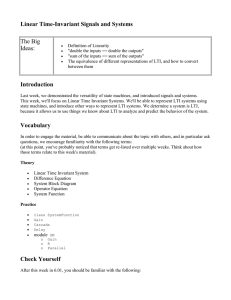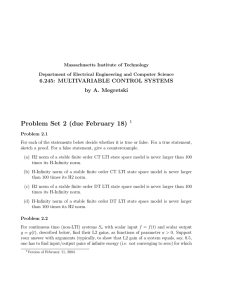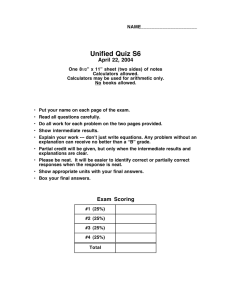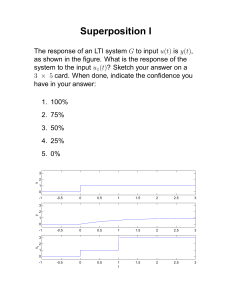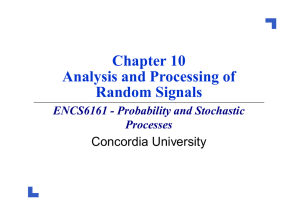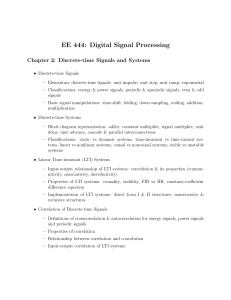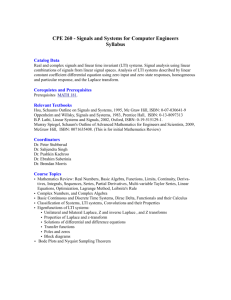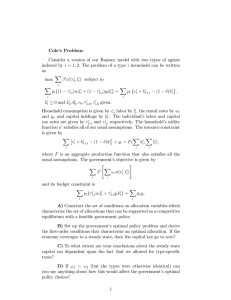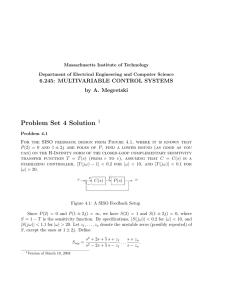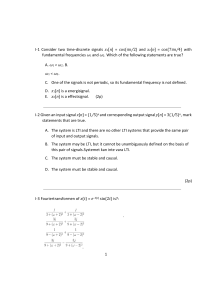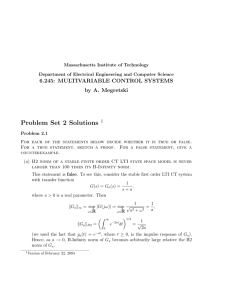Massachusetts Institute of Technology
advertisement
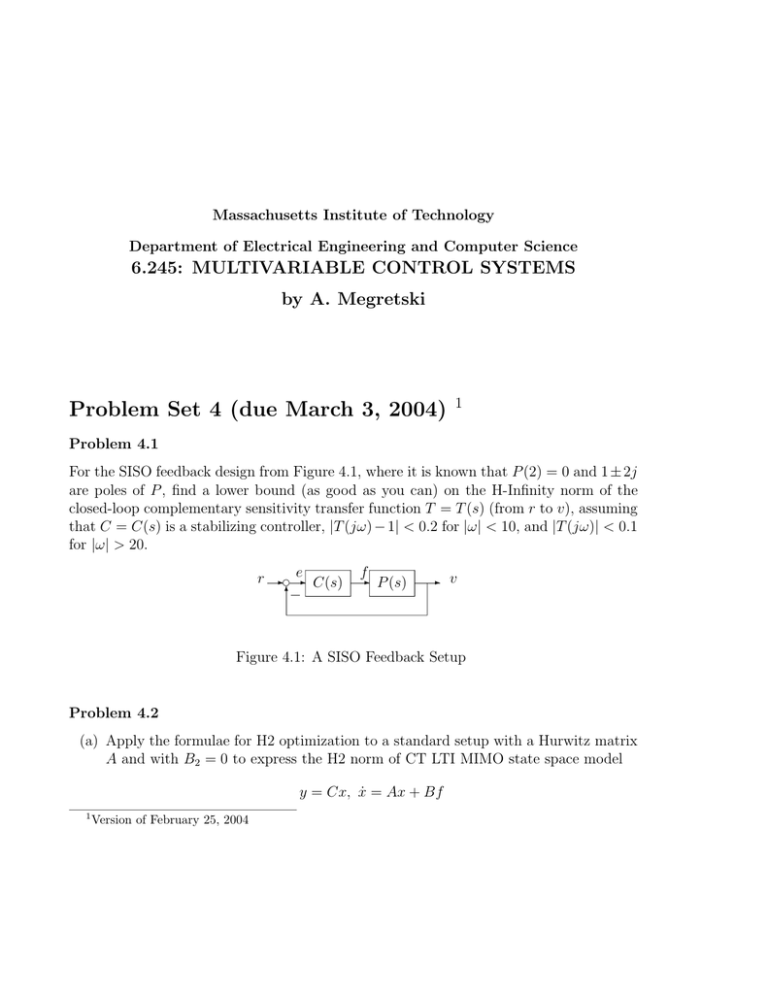
Massachusetts Institute of Technology Department of Electrical Engineering and Computer Science 6.245: MULTIVARIABLE CONTROL SYSTEMS by A. Megretski Problem Set 4 (due March 3, 2004) 1 Problem 4.1 For the SISO feedback design from Figure 4.1, where it is known that P (2) = 0 and 1 ± 2j are poles of P , find a lower bound (as good as you can) on the H-Infinity norm of the closed-loop complementary sensitivity transfer function T = T (s) (from r to v), assuming that C = C(s) is a stabilizing controller, |T (j�) − 1| < 0.2 for |� | < 10, and |T (j�)| < 0.1 for |� | > 20. e f r � C(s) P (s) � − v Figure 4.1: A SISO Feedback Setup Problem 4.2 (a) Apply the formulae for H2 optimization to a standard setup with a Hurwitz matrix A and with B2 = 0 to express the H2 norm of CT LTI MIMO state space model y = Cx, ẋ = Ax + Bf 1 Version of February 25, 2004 2 in terms of matrices C and P , where P = P � is the solution of the Lyapunov equation AP + P A� = −BB � . (b) Use the result from (a) to obtain an explicit (with respect to a0 , a1 , a2 ) formula for the H2 norm of system with transfer function 1 , G(s) = 3 2 s + a2 s + a1 s + a0 where a0 , a1 , a2 are positive real numbers such that a1 a2 > a0 . (c) Use MATLAB to check numerically correctness of your analytical solution. Problem 4.3 An undamped linear oscillator with 3 degrees of freedom is described as a SISO LTI system with control input v, “position” output q, and transfer function 1 P0 (s) = . 2 (1 + s )(4 + s2 )(16 + s2 ) The position output q is measured with delay and noise, so that the sensor output g is defined as g = 0.1f1 + q, ˆ where qˆ is output of an LTI system with input q and transfer function 1−s P1 (s) = . 1+s The task is to design an LTI controller which takes g and a scalar reference signal r as inputs, produces v as its output, and satisfies the following specifications, assuming r is the output of an LTI system with input f2 and transfer function � 2a P2 (s) = , s+a where a > 0 is a parameter, and f = [f1 ; f2 ] is a normalized white noise: (a) the closed loop system is stable; (b) the closed loop dc gain from r to q equals 1; (c) the mean square value of control signal v is within 100; (d) the mean square value of tracking error e = q − r is as small as possible (within 20 percent of its minimum subject to constraints (a)-(c)). Use H2 optimization to solve the problem for a = 0.2 and a = 0.01.

